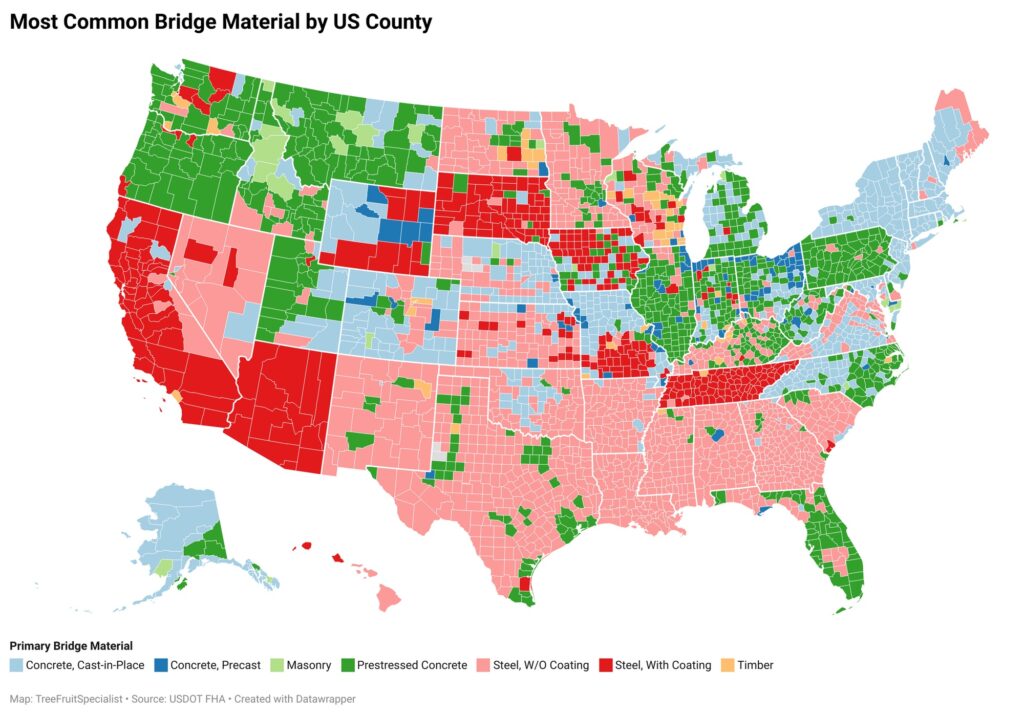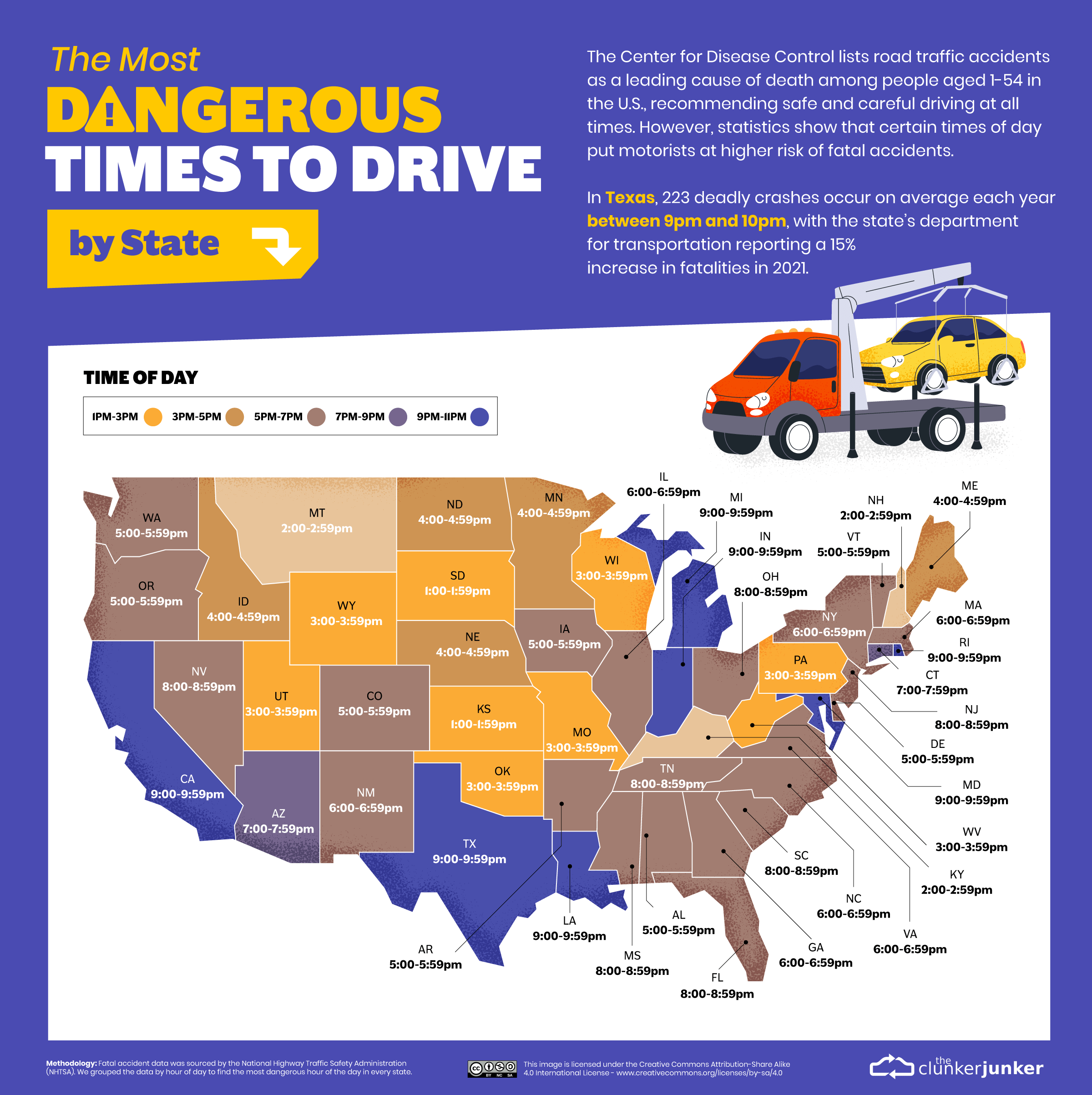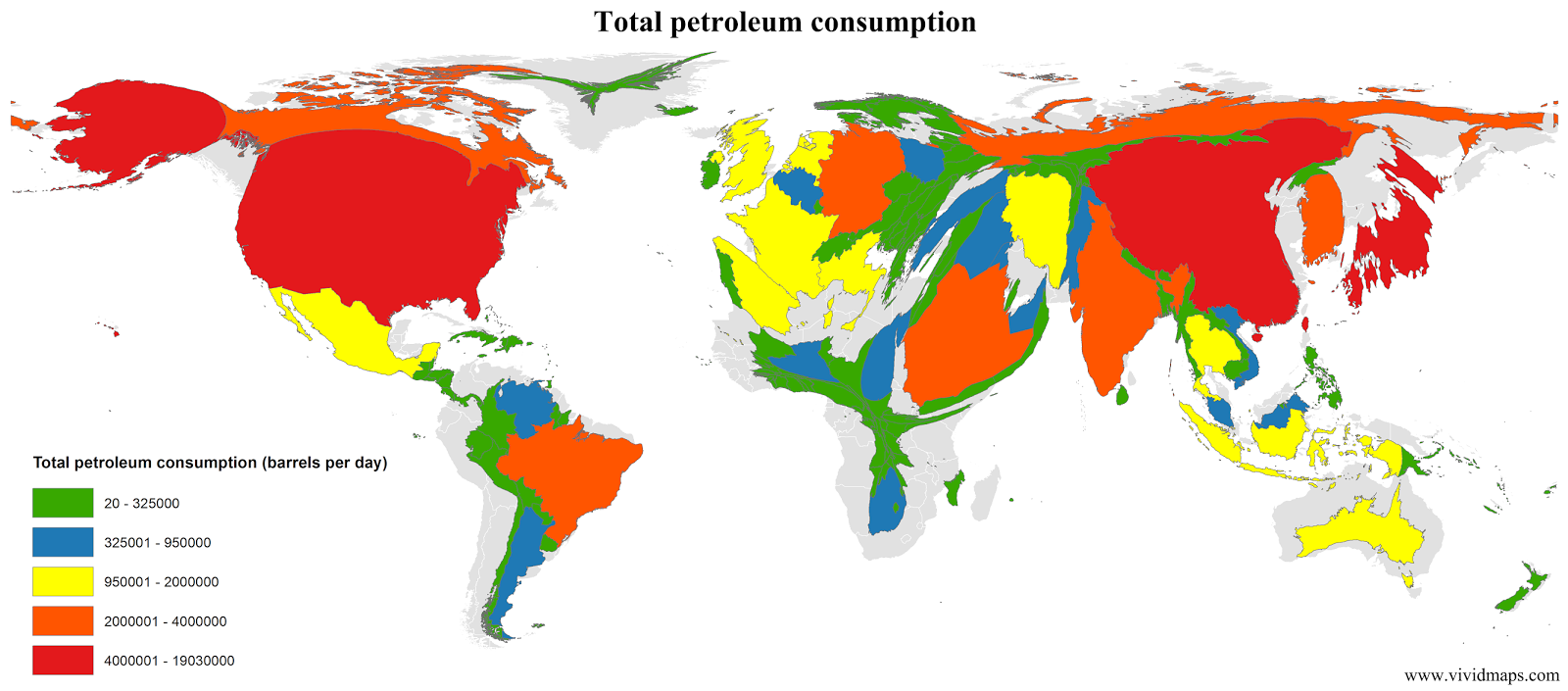What America’s Bridges Are Really Made Of—By County
Let’s be honest – most of us don’t pay much attention to what a bridge is made of. We just drive over it and move on. But the stuff holding those bridges together? It actually changes a lot depending on where you are in the U.S. That’s why this map caught my eye. It was made by a Reddit user named TreeFruitSpecialist, and it shows the most common bridge material in every county across the country.
He used fresh data from the 2025 National Bridge Inventory, which comes from the Federal Highway Administration and covers over 743,000 bridges. To build the map, u/TreeFruitSpecialist worked with R (he used dplyr, sf, and ggplot2).

Each color on the map shows the most common material used in bridges in that area – like cast-in-place concrete, precast, prestressed, different types of steel (with or without coating), masonry, or even timber in some rural spots. If a county has no bridges at all, it’s shown in gray.
Now here’s where it gets interesting: the patterns are way more local than you might expect. For example, steel is super common across the West and South – especially coated steel, which makes sense in dry or dusty areas. On the other hand, the Northeast and parts of the central U.S. tend to go with cast-in-place concrete. And in the Midwest? Prestressed concrete seems to be the go-to, probably because it can handle brutal winters and heavy traffic.
Some areas still have a surprising number of masonry bridges, especially in parts of Montana and Idaho. These are likely older structures that are still holding up in rural areas with fewer newer replacements. And in a few counties, timber still tops the list – which feels like a throwback, but hey, it still works in some places.
One thing you’ll notice is how material use can shift right at state borders. That could be about different DOT standards, local materials, or just regional preferences. Climate probably plays a big role too. What holds up in Florida might not make sense in North Dakota.








